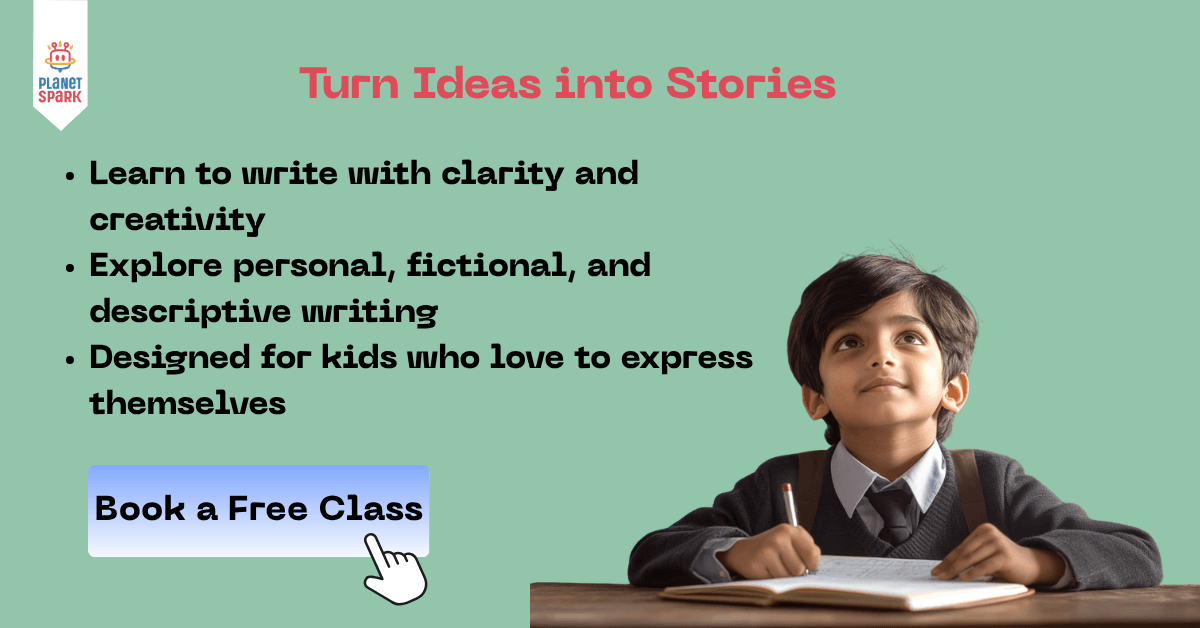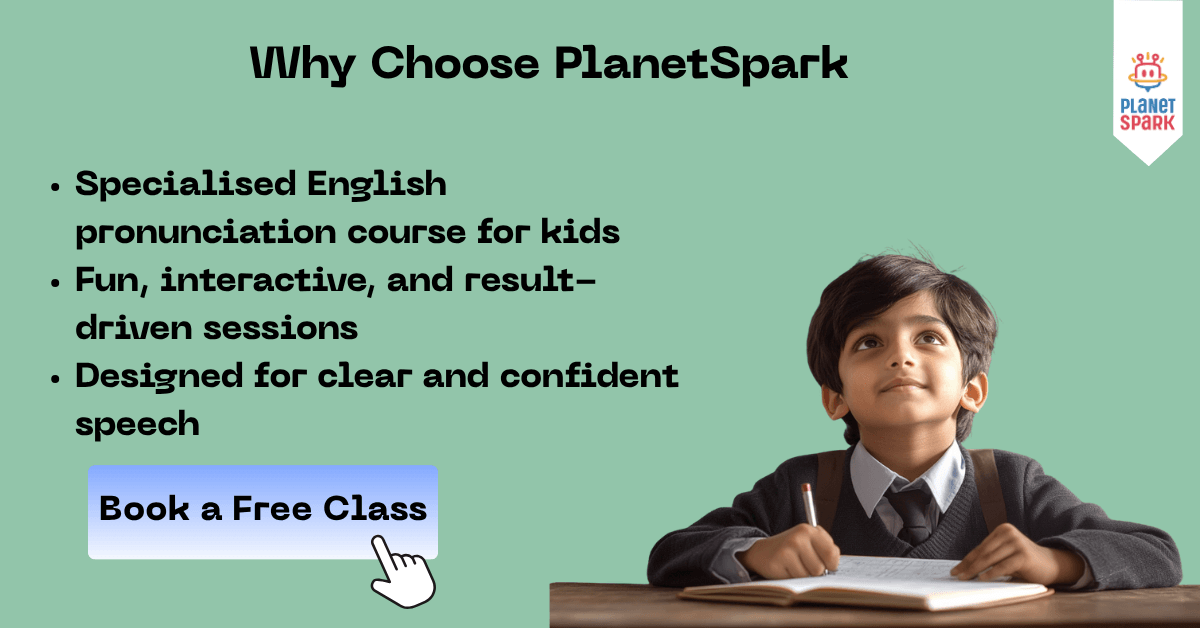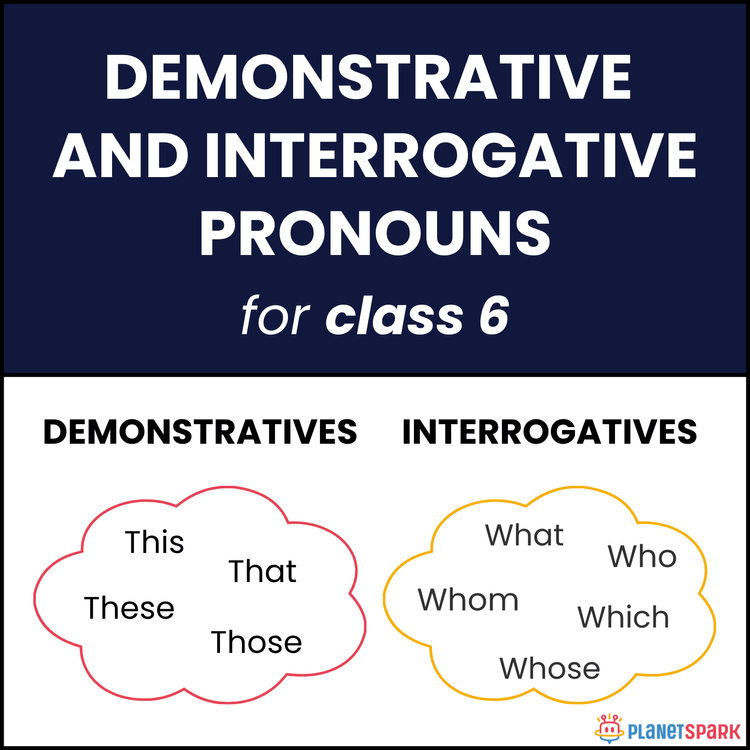The Magical Tree: A Safe Haven for Youth

Table of Contents
- The Symbolism of the Magical Tree
- Childhood and the Need for Safe Spaces
- The Magical Treehouse in Literature and Culture
- Why Youth Relate Deeply to Magical Treehouses
- The Psychological Importance of Safe Havens
- Storytelling Lessons from the Magical Treehouse
- The Magical Treehouse and Resilience in Youth
- Storytelling as a Path to Identity
- The Social Dimension of Magical Treehouses
- Hope and Healing Through the Magical Treehouse
- Creativity Unleashed in Storytelling
- The Lasting Impact of Magical Treehouse Stories
- Why Choose PlanetSpark for Storytelling?
In every child’s heart, there exists a place that feels like pure magic, a space where worries fade, creativity flourishes, and safety is never in question. For some, it might be their bedroom or a grandparent’s kitchen. For others, it’s an imaginary escape crafted in their mind. One of the most timeless symbols of such comfort and protection is the magical tree, a treehouse where imagination blossoms, fears vanish, and self-expression finds a voice.
When people search for magical trees or related terms, they are often looking for inspiration, stories, or metaphors that speak to the childlike wonder of imagination and safety. In this blog, we will dive deep into the idea of a magical treehouse as a symbol of safety and creativity in youth. We’ll explore how treehouses in stories provide comfort, what they symbolize in childhood development, and how they connect with storytelling, imagination, and emotional growth.
In the sections ahead, we will uncover:
The role of the magical tree in folklore, stories, and personal experiences.
Why safe havens, both real and imaginary, are important for young minds.
How storytelling about treehouses nurtures creativity and resilience.
The psychological importance of “safe spaces” for children and teenagers.
The power of metaphor and symbolism in creating stories around magical places.
By the end of this journey, you’ll see that a magical treehouse is not just a childhood fantasy, but a vital storytelling tool that reflects safety, comfort, and imagination in youth.

The Symbolism of the Magical Tree
Trees have long been symbols of strength, resilience, and protection. In myths and folklore, a magical tree often serves as a guardian of secrets, a shelter from harm, or a gateway to another world. For children, the image of a treehouse combines both physical and emotional security perched high above the world, offering a bird’s-eye view of life yet wrapped in nature’s arms.
The concept of a treehouse being “magical” lies not only in its physical design but in what it represents: a child’s ability to create a space that is entirely their own. When youth imagine a magical tree, they see a space where no judgment exists, where they can dream freely, and where safety is guaranteed.
Storytelling Through Trees
Storytellers often use trees as powerful metaphors. From the Tree of Life in ancient mythologies to enchanted forests in fairy tales, the magical tree has always embodied growth, wisdom, and sanctuary. In children’s storytelling, a treehouse becomes the canvas for secret meetings, fantastical adventures, and brave journeys, all while symbolizing a safe harbor from the challenges of the outside world.
Childhood and the Need for Safe Spaces
Every child needs a place where they feel safe and protected. Psychologists emphasize that these safe spaces are critical for emotional growth and mental well-being. A magical treehouse is not just an imaginative escape—it represents that essential feeling of comfort and security.
When children have a safe place, whether it is a treehouse, a quiet room, or an imaginary world, they can process their feelings without fear. This sense of safety enables them to explore new ideas, experiment with creativity, and even confront fears in symbolic ways. The magical tree, therefore, is not just wood and leaves; it is a symbol of reassurance that tells a child, “You are safe here.”
Emotional Security Through Imagination
When youth describe a magical treehouse, they often infuse it with features that reflect what they value most: warm light, cozy nooks, or protective branches. These descriptions are more than just storytelling devices; they are reflections of inner desires for comfort and care. Storytelling around the magical tree gives children a chance to express emotions in a safe, symbolic way.
Help your child learn how to turn their magical tree into unforgettable stories.
Sign up for PlanetSpark’s storytelling program today enrollments close soon!
The Magical Treehouse in Literature and Culture
Throughout history, stories of magical places have shaped children’s imagination. From Enid Blyton’s The Magic Faraway Tree to modern-day fantasy tales, the magical tree has always held a place of honor in literature. These stories give children not only a sense of wonder but also lessons about bravery, resilience, and friendship.
Treehouses in stories often serve as safe bases where children regroup, share secrets, and build bonds. They symbolize independence and protection at the same time, a rare balance that resonates strongly with young readers. For youth, the magical treehouse is not just a play area; it becomes a metaphor for belonging and emotional safety.
Cultural Interpretations of Magical Trees
Different cultures interpret magical trees in unique ways. In Norse mythology, Yggdrasil connects the nine worlds, symbolizing unity and life. In Indian folklore, trees are considered sacred protectors. For children today, a magical tree in a story represents a universal longing for protection and growth. It is a bridge between the known and the unknown, a safe passage into the world of creativity.
Why Youth Relate Deeply to Magical Treehouses
For youth, especially in today’s digital world, the idea of a safe and magical treehouse offers a refreshing contrast. While online spaces can sometimes feel overwhelming, the mental image of climbing into a treehouse filled with imagination gives children and teens a sense of escape.
More importantly, magical treehouses represent autonomy. They are places created and owned by the child alone. Inside, rules are theirs to make, dreams are theirs to chase, and safety is always assured. When this imagery is integrated into storytelling, it empowers youth to embrace their creativity while anchoring themselves in feelings of security.
Treehouses as Metaphors for Growth
Climbing into a treehouse mirrors the climb of personal growth; every rung on the ladder is a step toward self-awareness. Once inside, children look out at the world from above, reflecting the confidence that comes with feeling safe. This makes the magical tree a perfect metaphor in storytelling for youth development.
Turn their safe spaces into inspiring stories with PlanetSpark’s expert mentors.
The Psychological Importance of Safe Havens
For children and young adults, safety is not just physical; it is deeply emotional. Having a place like a magical treehouse assures that there is always a retreat from the outside world. This safe retreat gives youth the courage to face challenges, knowing they have a comforting space to return to.
Safe havens also play a major role in storytelling. When young writers imagine a magical tree, they are indirectly writing about their emotional needs and strengths. These stories often reveal themes of belonging, courage, and discovery, elements that are essential for building resilience in real life.
Safe Spaces as Creative Fuel
The connection between safety and creativity is undeniable. When children feel protected, their imagination flourishes. They write stories filled with vibrant details, daring adventures, and strong characters. A magical treehouse becomes more than just a backdrop; it transforms into a character itself, sheltering, guiding, and inspiring the storyteller.
Storytelling Lessons from the Magical Treehouse
Treehouses in stories often teach life lessons. In youth storytelling, a magical treehouse can symbolize more than protection; it can represent friendship, bravery, and self-discovery. When a child tells a story set in such a treehouse, they are usually exploring values that matter to them.
For example, a story about two friends meeting in their magical treehouse may actually be about loyalty and trust. A tale of hiding in a treehouse during a storm might represent finding inner strength during tough times. These symbolic narratives allow children to express themselves while developing storytelling techniques.
Narrative Arcs and the Treehouse Setting
The magical treehouse is a versatile storytelling device because it can serve as the beginning, middle, or end of a narrative arc.
Beginning: It’s the entry to an adventure or secret world.
Middle: It’s the place where characters regroup, share secrets, or make decisions.
End: It becomes the final safe landing, symbolizing triumph and closure.
Teaching youth how to structure stories using such settings helps them master narrative flow while keeping their creativity alive.
PlanetSpark storytelling mentors guide kids in building powerful story arcs using settings like the magical treehouse.
The Magical Treehouse and Resilience in Youth
Life is filled with uncertainties, and youth often face challenges that test their confidence and resilience. Imagining or writing about a magical treehouse offers a symbolic way to process these challenges. It becomes a metaphorical shield against bullying, peer pressure, or academic stress.
When children narrate stories where their treehouse protects them, they are essentially building coping strategies. This makes storytelling more than an art it becomes a psychological tool for resilience. The act of climbing into their magical tree in a story symbolizes their ability to rise above problems.
The Role of Imagination in Overcoming Fear
Imagination is a powerful defense mechanism. A child who writes about hiding in a magical treehouse during a storm is practicing emotional regulation. They learn, through metaphor, that fear can be managed and overcome. In this way, the magical treehouse is not just a symbol of safety, but also a rehearsal stage for handling life’s storms.

Storytelling as a Path to Identity
As children grow, they begin to question who they are and what they value. Storytelling provides them with a safe framework to explore these questions. The magical treehouse often becomes the symbolic space where children “try on” different versions of themselves.
In some stories, they may write themselves as brave adventurers. In others, they may imagine themselves as thoughtful observers sitting quietly in their treehouse. Both roles reflect real aspects of identity they are developing. Through storytelling, youth not only create characters but also explore their own personalities.
Self-Expression Through Safe Settings
The magical tree acts as a canvas for self-expression. Children may decorate their treehouse with bright colors, secret passages, or magical doors, details that reveal their unique worldview. Encouraging youth to describe these settings in detail helps sharpen their descriptive writing skills while nurturing individuality.
The Social Dimension of Magical Treehouses
Beyond individual identity, treehouses often symbolize community. In many stories, a magical treehouse is the meeting point for friends, siblings, or even imaginary companions. These social settings teach youth the values of cooperation, trust, and teamwork.
When children craft such narratives, they learn how to weave dialogue, manage multiple characters, and highlight relationships. Storytelling through the lens of a magical tree encourages them to imagine bonds that are safe, supportive, and enriching.
Treehouses as Shared Spaces in Stories
A treehouse story can reveal how children view relationships. Do they allow others into their treehouse? Do they keep it private? These narrative choices reflect deeper feelings about belonging, trust, and boundaries. By analyzing these elements, mentors can guide children in both writing skills and social-emotional growth.
Let your child experience this growth with PlanetSpark’s engaging classes.
Hope and Healing Through the Magical Treehouse
Every child, at some point, encounters moments of uncertainty, loneliness, or fear. In such times, the magical treehouse serves as a beacon of hope. Whether real or imagined, this space embodies healing. It is where a child can reflect, recharge, and regain the courage to face the outside world.
In storytelling, these safe places become symbolic sanctuaries where characters find strength after hardship. When youth write about magical treehouses, they are subconsciously affirming their own ability to heal and grow stronger. The magical tree thus becomes a metaphor for resilience and optimism.
Imagination as a Tool for Renewal
Imagination has the power to reshape negative experiences into empowering stories. A child who imagines a treehouse filled with magical light after a storm is expressing the universal truth that hardships pass and brighter days follow. Such narratives help youth develop emotional intelligence while honing their creative writing skills.
Creativity Unleashed in Storytelling
The beauty of a magical treehouse lies in its versatility. It can be anything the storyteller desires: an enchanted castle, a secret lab, or a doorway to another universe. These creative variations showcase how children’s minds expand when they are given the freedom to invent.
Encouraging youth to describe their magical treehouses in detail nurtures sensory writing. They may write about the texture of the wooden floor, the sound of leaves in the wind, or the glow of lanterns hanging from the branches. These details enrich storytelling and help children master vivid description.
Unlocking Endless Possibilities
The magical tree is not confined to a single narrative. Each child imagines it differently, proving that creativity knows no bounds. By building stories around such imaginative spaces, children learn that they, too, are limitless in their expression and potential.
The Lasting Impact of Magical Treehouse Stories
As children grow into adults, the memories of their safe places, whether real treehouses or imaginary ones, remain powerful. These spaces symbolize more than safety; they remind us of our capacity to dream and create.
The act of writing or telling stories about magical trees helps youth preserve that innocence and creativity well into adulthood. It also equips them with storytelling skills that will serve them in academics, communication, and even professional life later on.
From Childhood Fantasy to Lifelong Lesson
The magical treehouse ultimately becomes a timeless symbol. It teaches youth that safety and creativity are interconnected, and that both are necessary for personal growth. Through storytelling, these lessons are not just preserved but shared with others, making the treehouse a gift that extends beyond the individual.

The magical treehouse where youth always feel safe is more than just an imaginary hideout. It symbolizes protection, creativity, identity, and resilience. For young minds, it is both a sanctuary and a canvas, a place to process emotions, build narratives, and explore possibilities.
Through storytelling, these treehouses become alive. They teach children how to express themselves, navigate challenges, and grow into confident communicators. Just as a treehouse is built strong yet flexible, so too are the personalities of youth when nurtured through creativity and safety.
Why Choose PlanetSpark for Storytelling?
At PlanetSpark, we understand that storytelling is more than just an art; it’s a tool for confidence, communication, and creativity. Here’s what sets us apart:
Genre-Based Storytelling Curriculum – From short stories to poetry, fables, and personal narratives, children explore multiple storytelling forms.
Framework-Driven Learning – Kids learn structured techniques like story arcs, 5W1H, and descriptive frameworks to shape compelling stories.
Story + Speaking Integration – Children don’t just write stories; they present them orally, building expressive confidence.
Feedback & Rewriting – Each session includes peer and teacher feedback, helping kids improve continuously.
Publishing Opportunities – Young writers get to publish their stories in PlanetSpark’s blog, e-magazine, or anthologies, giving them pride and recognition.
Imagination Stimulus Activities – With prompts, story dice, and visual cues, kids unlock boundless creativity.
PlanetSpark is more than a learning platform; it’s a launchpad for tomorrow’s storytellers.
Enroll your child in PlanetSpark’s storytelling program today.
Limited free trial classes available book now before they’re gone!
Frequently Asked Questions
Magical treehouses symbolize safety, freedom, and creativity. They allow children to explore their imagination while feeling secure in a symbolic safe space.
Writing about a magical tree teaches children to use descriptive language, structure narratives, and explore metaphors all of which strengthen storytelling.
Yes! Storytelling builds both written and spoken communication skills. Sharing stories aloud helps children gain expressive confidence and overcome stage fear.
PlanetSpark combines creativity with structure. Children learn not only to imagine freely but also to shape their stories using frameworks and present them confidently.
Absolutely. Storytelling improves communication, empathy, and critical thinking skills that are essential in academics, leadership, and professional success.
Download Free Worksheets
Personalized Communication Report
Record a video to get a AI generated personalized communication report for your child

Hi There, want to try these
tips for your child with
LIVE with our expert coach?
Let's check your child's
English fluency

